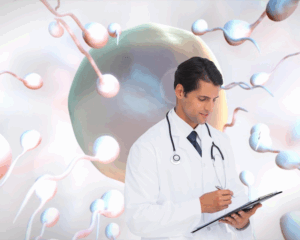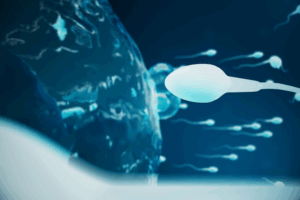
Gene therapy for azoospermia treatment
Introduction Male infertility, especially caused by azoospermia, affects millions of men worldwide. For those suffering from non-obstructive azoospermia, treatment options have been limited. However, thanks

Top cause of nonobstructive azoospermia? Non-obstructive azoospermia (NOA) is a condition where a man’s semen does not contain sperm due to a failure in sperm production. This condition can significantly impact male fertility and make natural conception difficult. Understanding the most common causes of NOA can help in early diagnosis and treatment.
Azoospermia is classified into two types:
Since NOA is a sperm production issue, identifying the underlying cause is crucial for treatment options, such as sperm retrieval procedures or assisted reproductive techniques like IVF and ICSI.
While there are multiple factors contributing to NOA, the most common cause is genetic abnormalities.
Genetic factors play a significant role in NOA. The most frequent genetic issues leading to NOA include:
Apart from genetic causes, other factors can contribute to non-obstructive azoospermia:
Hormones play a vital role in sperm production. Imbalances in crucial hormones such as:
Primary testicular failure can result from:
Several external factors can also contribute to NOA, including:
Doctors diagnose NOA using:
Top cause of nonobstructive azoospermia? While NOA can be challenging, some treatment options can help:
The most common cause of non-obstructive azoospermia is genetic abnormalities, particularly Klinefelter syndrome and Y chromosome microdeletions. However, hormonal imbalances, testicular disorders, and environmental factors can also contribute to this condition. Diagnosis through semen analysis, hormone testing, and genetic screening is essential for effective treatment. While NOA may seem challenging, modern medical advancements offer hope through hormonal therapy, sperm retrieval, and assisted reproductive techniques. If you or a loved one is dealing with NOA, consulting a fertility specialist is the best step toward exploring possible solutions.

Introduction Male infertility, especially caused by azoospermia, affects millions of men worldwide. For those suffering from non-obstructive azoospermia, treatment options have been limited. However, thanks

Azoospermia is one of the most challenging causes of male infertility, often leaving men with few options and couples struggling to conceive. But today, an
PROLISTEM® is a Patented Formula
Copyright © 2025 Prolistem®